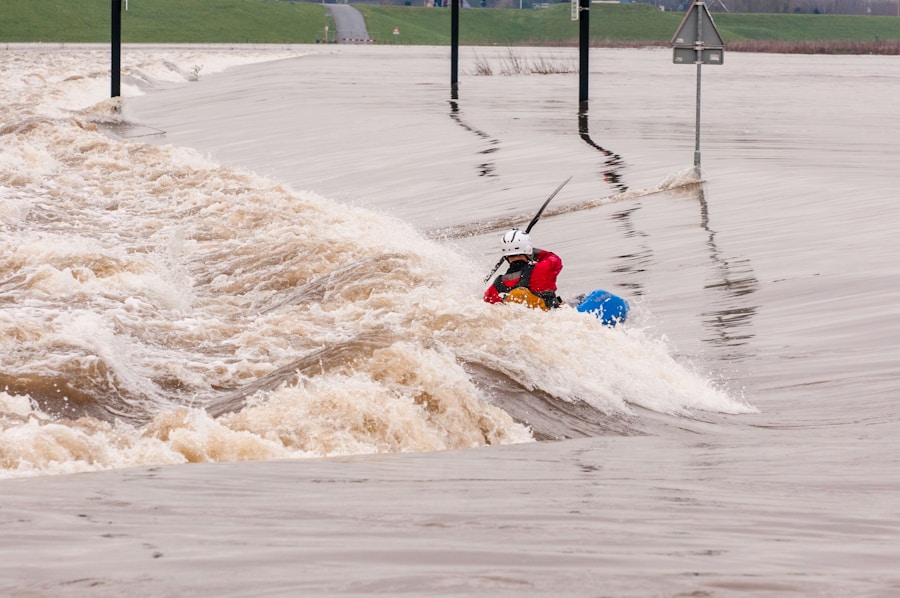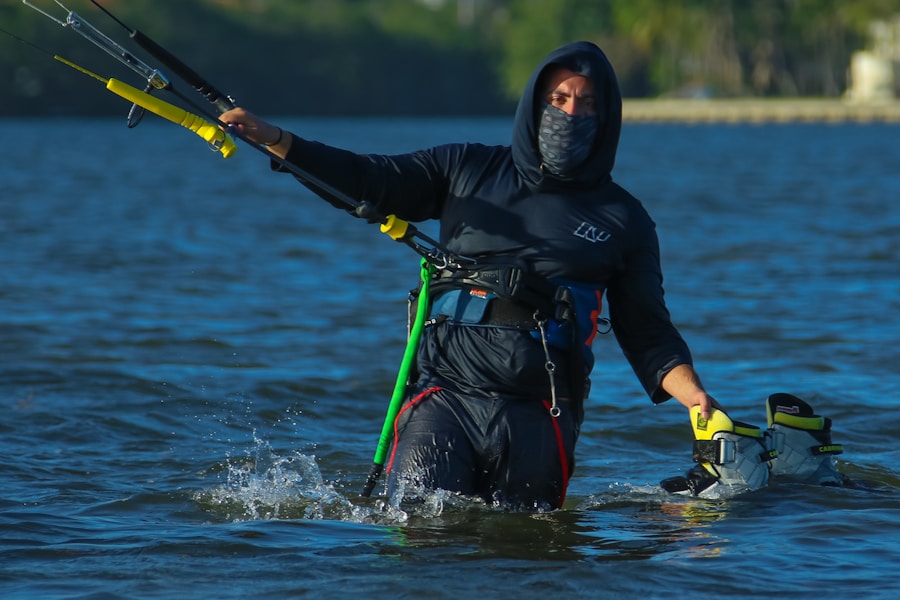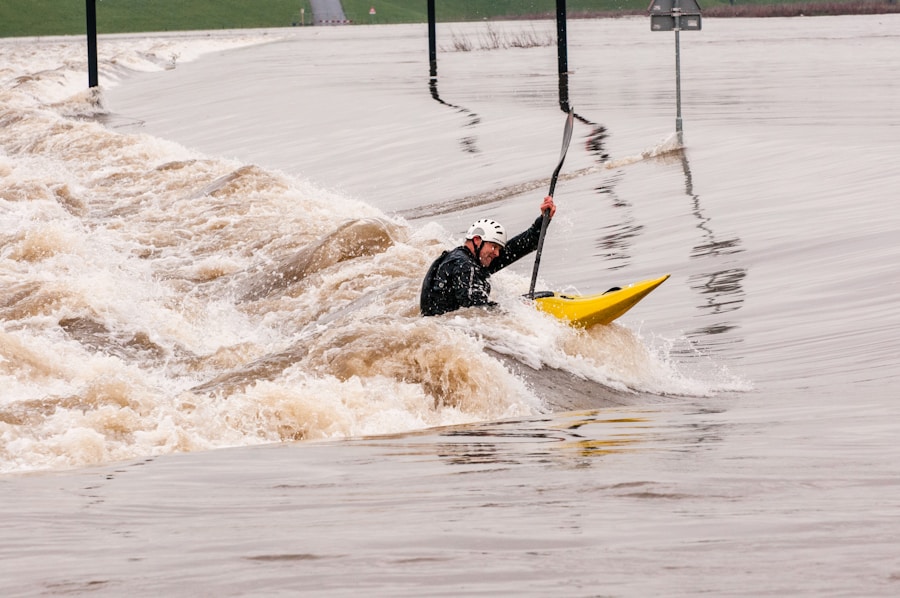Climate change has emerged as one of the most pressing global challenges of our time, influencing various aspects of life, including the realm of outdoor sports. As temperatures rise, weather patterns shift, and natural ecosystems undergo significant transformations, the implications for outdoor activities are profound. Athletes, enthusiasts, and organizations involved in sports that take place in natural environments are increasingly aware of how climate change can alter the landscapes they cherish and the conditions under which they compete.
From skiing in the Alps to surfing on the coasts of California, the very essence of these activities is intertwined with the climate, making it imperative to understand the relationship between climate change and outdoor sports. The impact of climate change on outdoor sports is not merely a future concern; it is a current reality that is already being felt across the globe. The increasing frequency of extreme weather events, such as heatwaves, heavy rainfall, and unpredictable storms, poses significant challenges to athletes and organizers alike.
Moreover, the gradual changes in seasonal patterns affect everything from snow cover in winter sports to water levels for rowing and kayaking. As these changes unfold, they not only threaten the viability of certain sports but also challenge the traditions and cultures that have developed around them. Understanding this dynamic is crucial for athletes, coaches, and sports organizations as they navigate an uncertain future.
Key Takeaways
- Climate change is impacting outdoor sports through changes in weather patterns, snow and ice conditions, and natural landscapes.
- Athlete safety is at risk due to extreme weather events, melting glaciers, and unpredictable conditions in outdoor sports environments.
- Adapting to climate change in outdoor sports requires strategies such as diversifying locations, using alternative materials, and implementing sustainable practices.
- Athletes can play a crucial role in advocating for climate change action through raising awareness, promoting sustainable practices, and supporting environmental initiatives.
- The future of outdoor sports in a changing climate depends on the ability of athletes, sports organizations, and communities to adapt, innovate, and advocate for sustainable solutions.
Effects of Climate Change on Outdoor Sports
Winter Sports Impacted
One of the most visible impacts is the reduction in snow cover and the shortening of winter seasons, which directly affects winter sports such as skiing and snowboarding. According to a report by the Intergovernmental Panel on Climate Change (IPCC), many ski resorts in Europe and North America have experienced a decline in natural snowfall, leading to increased reliance on artificial snowmaking.
Summer Activities Affected
In addition to winter sports, climate change also affects summer activities. For instance, rising temperatures can lead to dangerous heat conditions for runners, cyclists, and outdoor enthusiasts. Events like marathons and triathlons are increasingly challenged by heatwaves that can pose serious health risks to participants.
Ensuring Athlete Safety
The 2019 Boston Marathon faced unusually high temperatures, prompting race organizers to implement measures to ensure athlete safety, including additional water stations and medical support. Such adaptations highlight the need for sports organizations to be proactive in addressing climate-related challenges while ensuring that athletes can compete safely.
Risks and Challenges for Athlete Safety

As climate change continues to reshape the environment, athlete safety has become a paramount concern for those involved in outdoor sports. Extreme weather events pose immediate risks, such as lightning strikes during thunderstorms or flash floods that can occur with little warning. For example, in 2021, a sudden storm during a mountain biking event in Colorado led to dangerous conditions that forced organizers to halt the race and evacuate participants.
Such incidents underscore the unpredictability of weather patterns exacerbated by climate change and the need for contingency plans. Moreover, prolonged exposure to extreme heat can lead to serious health issues such as heat exhaustion or heat stroke. Athletes training or competing in high-temperature environments must be vigilant about hydration and acclimatization.
The National Athletic Trainers’ Association has emphasized the importance of monitoring environmental conditions and implementing heat safety protocols during practices and competitions. This includes scheduling events during cooler parts of the day or providing shaded areas for rest. As climate change continues to increase the frequency and intensity of heatwaves, these measures will become increasingly critical for safeguarding athlete health.
Strategies for Adapting to Climate Change in Outdoor Sports
| Climate Change Impact | Adaptation Strategy |
|---|---|
| Rising temperatures | Shift competition times to cooler parts of the day |
| Increased frequency of extreme weather events | Develop emergency response plans for athletes and spectators |
| Changing snowfall patterns | Invest in snowmaking technology for ski resorts |
| Rising sea levels | Relocate coastal sports facilities to higher ground |
| Heat-related illnesses | Provide cooling stations and hydration stations at outdoor events |
In response to the challenges posed by climate change, various strategies are being developed to help outdoor sports adapt effectively. One approach involves enhancing infrastructure to withstand changing weather patterns. For instance, ski resorts are investing in advanced snowmaking technology that allows them to produce snow even when temperatures are marginally above freezing.
This not only helps maintain operations during warmer winters but also ensures that athletes have access to suitable training conditions. Another strategy involves promoting sustainable practices within outdoor sports communities. Organizations are increasingly recognizing their role in mitigating climate change through initiatives such as reducing carbon footprints and promoting eco-friendly practices.
For example, many cycling events now encourage participants to use public transportation or carpool to reduce emissions associated with travel. Additionally, some sports organizations are partnering with environmental groups to restore natural habitats or promote conservation efforts that protect the ecosystems where outdoor sports take place. Education also plays a crucial role in adapting to climate change within outdoor sports.
Athletes, coaches, and event organizers must be informed about the potential impacts of climate change on their activities and equipped with knowledge about best practices for safety and sustainability. Workshops, seminars, and online resources can provide valuable information on how to navigate changing conditions while minimizing environmental impact.
The Role of Athletes in Climate Change Advocacy
Athletes have a unique platform that allows them to influence public opinion and advocate for action on climate change. Many prominent figures in sports have begun using their voices to raise awareness about environmental issues and promote sustainable practices within their respective fields. For instance, professional surfers have been vocal about ocean health and the impact of climate change on marine ecosystems, urging fans and fellow athletes to take action against pollution and overfishing.
Moreover, athletes can serve as role models by adopting sustainable practices in their personal lives and encouraging their fans to do the same. This can include everything from reducing single-use plastics to supporting renewable energy initiatives. The influence of athletes extends beyond their immediate fan base; they can inspire broader societal changes by aligning themselves with environmental organizations or participating in campaigns aimed at combating climate change.
Collaborative efforts between athletes and environmental organizations can amplify their impact. Initiatives like “Athletes for Climate Action” bring together athletes from various disciplines to advocate for policies that address climate change at local, national, and global levels. By leveraging their visibility and credibility, athletes can help drive meaningful conversations about sustainability within their sports communities and beyond.
The Future of Outdoor Sports in a Changing Climate

Challenges and Opportunities
While challenges abound—ranging from unpredictable weather patterns to shifting ecosystems—the resilience of the outdoor sports community is evident in its proactive approach to adaptation.
Innovative Strategies and Athlete Advocacy
Innovative strategies are being implemented across various sports disciplines, from enhancing infrastructure to promoting sustainable practices. The role of athletes as advocates for climate action further strengthens this movement, as they harness their influence to inspire change both within their communities and on a global scale.
Collaboration for a Sustainable Future
As we look ahead, it is clear that collaboration among athletes, organizations, and environmental advocates will be essential in navigating the complexities of climate change while preserving the spirit of outdoor sports for future generations.
FAQs
What is climate change?
Climate change refers to long-term changes in temperature, precipitation, and other atmospheric conditions on Earth. It is largely caused by human activities such as burning fossil fuels, deforestation, and industrial processes, which release greenhouse gases into the atmosphere.
How does climate change impact outdoor sports?
Climate change can impact outdoor sports in various ways, including altering weather patterns, increasing the frequency and intensity of extreme weather events, and changing the availability of natural resources such as snow and water for activities like skiing, snowboarding, and water sports.
What are the safety concerns for athletes related to climate change?
Athlete safety concerns related to climate change include increased risk of heat-related illnesses, exposure to extreme weather conditions, changes in air quality, and potential impacts on the infrastructure and facilities used for outdoor sports.
What measures can be taken to address the impact of climate change on outdoor sports and athlete safety?
Measures to address the impact of climate change on outdoor sports and athlete safety may include implementing heat safety protocols, adapting sports facilities and equipment to changing environmental conditions, promoting sustainable practices within the sports industry, and advocating for policies to mitigate climate change.
